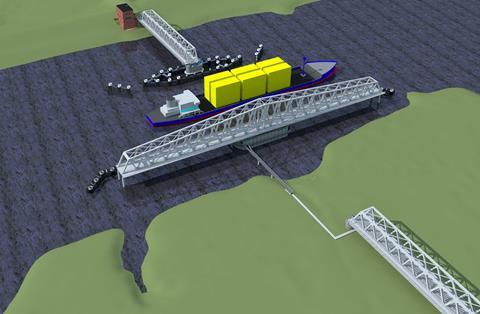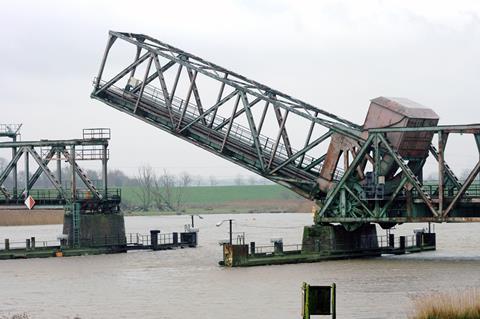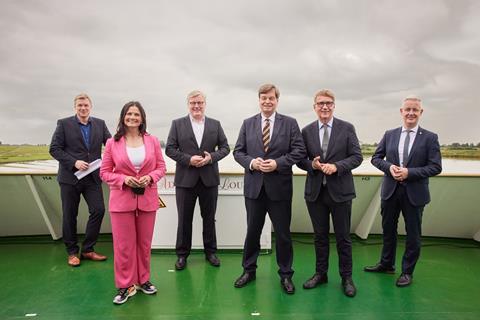
GERMANY: A ceremony has been held to symbolically launch work to build the largest swing bridge of its kind in Europe, which will replace the Friesen Bridge over the River Ems near the Dutch border which was irreparably damaged by a cargo ship in December 2015.
Tendering is to begin shortly, with main construction works expected to start in mid-2022 for completion in 2024. The cost of the project is now put at €125m, around double the initial estimates.

The remains of the existing bridge will be removed this year to allow the construction of the new 337 m long bridge. This will include a 145 m long, 1 800 tonne central section which can be rotated 90° to enable ocean-going ships to pass.
It will take around 7 min to open the bridge, faster than the previous bascule bridge, and the 71 m wide shipping channel will be 25 m wider than before to enable larger cruise ships to be built upstream at the Meyer Werft shipyard. The bridge will include a single track railway and a 2·5 m wide pedestrian and cycle path.

Trains have been unable to use the bridge since the 2015 collision, with Arriva operating buses to replace part of its cross-border service from Groningen in the Netherlands to Leer in Germany. This was a setback for the EU-backed Wunderline project, which is working to boost traffic on the international corridor linking Groningen, Leer and Bremen.

‘In the European Year of Rail, we are setting an example for climate-friendly rail transport across borders’, said Ronald Pofalla, DB Board Member for Infrastructure, at the ceremony on July 21.
‘We are building Europe’s largest lift-and-turn bridge and offering people an attractive, low-emission alternative to the car. There is still a gap between the two banks today, but we will be connecting nations again at the end of 2024.’

















